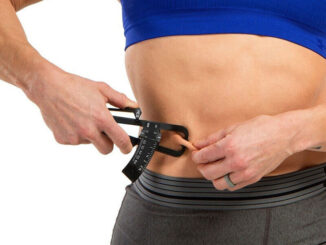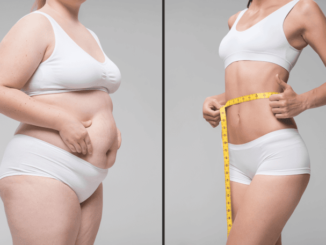
Body composition measures the relative proportions of fat and lean tissue in the body. There are many ways to measure body composition, but they all essentially fall into two main categories: direct and indirect methods.
Direct methods of measuring body composition involve taking direct measurements of body fat through skinfold calipers or underwater weighing. Indirect methods, on the other hand, rely on indirect measurements to estimate body fat. The most common indirect method is bioelectrical impedance analysis (BIA), which uses electrical current to estimate body fat.
While many different ways to measure body composition, they all have advantages and disadvantages. Here are 5 of the most common methods:
1. Skinfold Calipers
Skinfold calipers are one of the most popular methods of measuring body fat. They are inexpensive and easy to use and can be done at home with minimal training.
Skinfold calipers work by pinching the skin and subcutaneous fat at specific points on the body and then measuring the thickness of the skin fold with a ruler or tape measure. The skinfold measurements are then used to estimate the total amount of body fat.
One of the main advantages of skinfold calipers is that they can measure body fat at different body sites, giving you a more accurate estimate of your overall body fat percentage.
However, skinfold calipers are subject to error and are not as accurate as some of the other methods on this list.
2. Bioelectrical Impedance Analysis (BIA)
BIA is a method of estimating body composition that uses electrical current to estimate the amount of water in the body. The theory behind BIA is that lean tissue is a better conductor of electricity than fat tissue.
BIA is usually done with a handheld device placed on the skin. The device sends a small electrical current through the body and then measures the resistance to the current. The resistance is then used to estimate the percentage of body fat.
BIA is a relatively quick and easy way to estimate body fat, becoming more popular as technology improves. However, it is not as accurate as some of the other methods on this list.
3. Dual-Energy X-Ray Absorptiometry (DEXA)
DEXA is the most accurate method of measuring body composition. It uses low-dose x-rays to measure the density of different tissues in the body.
DEXA is usually done in a hospital or clinic setting. The tested person lies on a table while a machine passes over their body. The machine takes several body measurements and then uses a computer to estimate body fat percentage.
DEXA is the most accurate method of measuring body composition but is also the most expensive and time-consuming.
4. Hydrostatic Weighing
Hydrostatic weighing is another method of measuring body composition that is considered accurate. It is often used in research settings.
Hydrostatic weighing works by measuring the body’s density. The person being tested is weighed underwater while wearing special equipment. The weight of the water displaced by the body is then used to calculate the body’s density. The body’s density is then used to embody fat percentage fat.
Hydrostatic weight gain is an accurate method of measuring body composition, but it is also expensive and time-consuming.
5. Air Displacement Plethysmography (ADP)
ADP is a newer method of measuring body composition similar to hydrostatic weighing. It is considered to be accurate and is often used in research settings.
ADP works by measuring the body’s volume. The person being tested is placed in a special chamber that measures the air the body displaces. The body’s volume is then used to estimate body fat percentage.
ADP accurately measures body composition, but it is also expensive and time-consuming.
Regardless of your chosen method, it is important to remember that body composition is just one piece of the puzzle. Maintaining a balanced diet and regular physical activity is essential to maintain a healthy lifestyle.



Be the first to comment